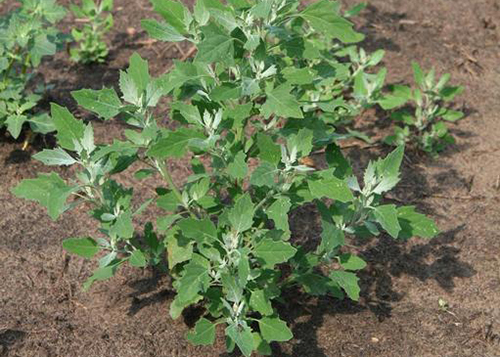Praise God for the abundant rains this summer that have produced beautiful corn and soybean fields, bountiful gardens, and lawns that are still green in mid-August! Although the temperatures have been hot, moisture has remained high and we have yet to see the gaping cracks in our clay soils.
Along with the prolific growth of crops, however, comes the even greater growth of weeds. Farmers, gardeners and other growers are struggling this summer to stay on top of the excessive advancement of unwanted plants in unwanted places.
This summer’s growing conditions remind me of my first summer job at Woodlawn Poultry Farm. The proprietors were well ahead of the modern curve and employed organic weed control way back in the seventies. I was it.
I remember spending up to 12 hours some days under the hot August sun pulling weeds from the large truck garden and three acre strawberry fields. Today, some might consider that child abuse but my parents and employers called it character building. At a dollar an hour, it was also building my savings account for that new 10-speed.
In order to do this job properly, however, it takes some training. There are many different weed species, some of which look strikingly similar to desirable crops. In addition, some foliage changes appearance during various growth stages so it requires knowledge of this as well.
Thankfully, I had received extensive training in this field (pun intended) in my parents’ garden. I learned to loathe lambsquarters, crabgrass, and purslane while sparing young tomatoes, peas, and beets. Some weeds, like dandelions, were particularly obnoxious as they broke off with their roots remaining in the ground which insured my job security for the coming weeks.
I did a lot of thinking during all that field time. Some days my imagination created stories to pass the hours. Many times, however, as I struggled with pigweeds taller than I was, I thought about how much of this could have been prevented through the judicious use of weed killers.
While care must be taken in the mixing and use of chemicals, a small amount of properly applied herbicide can greatly reduce the amount of physical labor required. I remember Doc Mowery referring to this as “weedeater in a jug.”
These rambling remembrances, however, can serve as important reminders in our spiritual gardens. When times are good and life is easy, weeds often grow as well. Temptations that we might not have been able to afford during drier seasons of life begin to take root and shoot upward.
Consumerism, excessive recreation, media indulgence, laziness, and more begin to steal water, sunlight, and nutrients from desirable plants such as prayer, corporate worship, Christian service, and Bible study. Too often we fail to identify many of these as weeds until they develop such strong roots that they become very difficult to remove. Spiritual weed identification and control is vitally important.
Just as is often the case with our vegetables, our relationship with Jesus also needs cultivation. Daily time in a garden or flowerbed eliminates the need for marathon pulling sessions, and regular quiet times with Jesus can help us locate and remove spiritual pigweeds before they reach towering heights. Once that happens, drastic measures such as pickaxes and hoes must be employed.
Later in life I coached FFA Crops teams that trained students to identify 75 different weeds and their seeds. Such preparation helped them not only in contests, but later in their occupations and personal gardens. So too through study, sermons, fellowship, and experience, we learn from other believers to identify spiritual weeds as well as their control strategies. But we must avail ourselves of such training and not resist it.
As we enjoy this summer’s lush growing season for both crops and weeds, may it remind us to identify and control the spiritual weeds in our own lives that we might yield maximum produce for our Gardener.
Blessings, George
